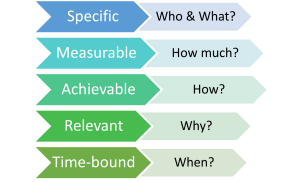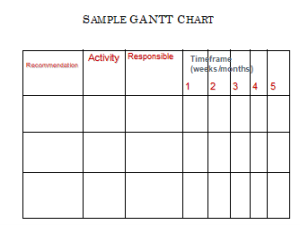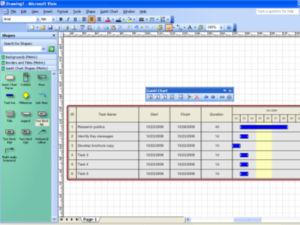18 Stage 3: Communicate
At this stage of the plan you are ready to set the communication objectives and strategies and develop the tactics which will bring your plan to life. This phase of PR planning is often the most exciting and rewarding for public relations practitioners because this is where creative elements are produced, and all of the work done in the previous two stages can finally be applied to concrete tools, events, messages, and activities. It can sometimes be challenging not to jump right to the development of tactics and messages earlier in the process, but it is very important to have that groundwork in place before you begin the implementation. That way, you know that the creative elements you are investing your time and budget in will be effective and appropriate to your communication objectives.
The first thing to address in the Communicate stage is the development of communication objectives and strategies.
Objectives are derived from the goal statement established in the previous stage of the plan. But unlike the broadly constructed goal, objectives are concisely written and very specific, precise and measurable. They must also be time sensitive and indicate clear, measurable results.
SMART objectives- provide a framework to assist in the crafting of effective objectives. The acronym SMART provides a good template for developing objectives that are; specific, measurable, achievable, relevant, and time-bound. SMART objectives provide the details for how a broader goal will be achieved.

It is also important to remember that each target audience in your plan must have its own objective. Objectives are tailored to specific publics, and they will align with specific key message statements for each public.
Key messages provide the main points of information that you want your audience to hear, understand and remember. The key message statement itself should be a single sentence; 17 – 21 words in length. It should be specific to your audience, simple and concise, and it should be memorable. To begin crafting the key message statement, ask yourself, “if I could only say one sentence to my target audience to convey the objective of this plan, what would it be?” Be sure to use the language and tone that would best resonate with your audience.
Strategies provide the ‘how’ of the plan and give us the direction as to which tactics will be developed and executed in the implementation phase. Strategies help to operationalize the outcomes identified in the plan objectives. For example, a strategy might indicate the type of campaign – i.e. social media, educational, awareness, or behaviour modification. It might also indicate how tactics will be developed to support the strategy, i.e. a media strategy based on mainstream media interviews and media conferences, etc.
Tactics – flow from the identified strategies and provide the tasks and action items of the plan. They appear in the implementation phase and become he ‘legs’ of the plan. Tactics are the concrete communication tools and tasks that are used to execute the strategy.
These could include:
Media conferences Brochures Contests Feature stories
Town hall sessions Websites Presentations PD events
Advertisements Social Media posts Blogs Vlogs
Special events, and many more.
Project management tools
Once we get to the stage of the plan were multiple tactics are being implemented, it is very useful to employ a project management tool to keep track of all the details. There are many useful tools to choose from, including:
- Critical path
- PERT network
- Work back plan
- and the GANTT chart
The most commonly used tool among these options is the GANTT chart. This project management tool is a bar chart that illustrates program implementation using tasks and time. It was developed by engineer Henry Gantt around 1912 and is still very commonly used in project planning today. The Gantt chart works effectively in public relations planning as it allows for a breakdown of tactics by tasks involved and the time required to implement. In that way, deadlines for implementation can be tracked and evaluated.


Budgeting is also an essential aspect of project management. We will spend some time looking at budgets as project management tools later in this course.
An objective is a goal expressed in specific terms.
A goal is something that a person or group is trying to achieve.
Publics who receive a specifically targeted message that is tailored to their interests.
Provide the main points of information that you want your audience to hear, understand and remember.
A plan of action or policy designed to achieve a major or overall aim
Tactics are the activities that you will implement to carry out each strategy. They are the day-to-day steps that will move the organization forward towards reaching its overall objectives.
The project management tool in the form of a bar chart that illustrates program implementation using tasks and time.

